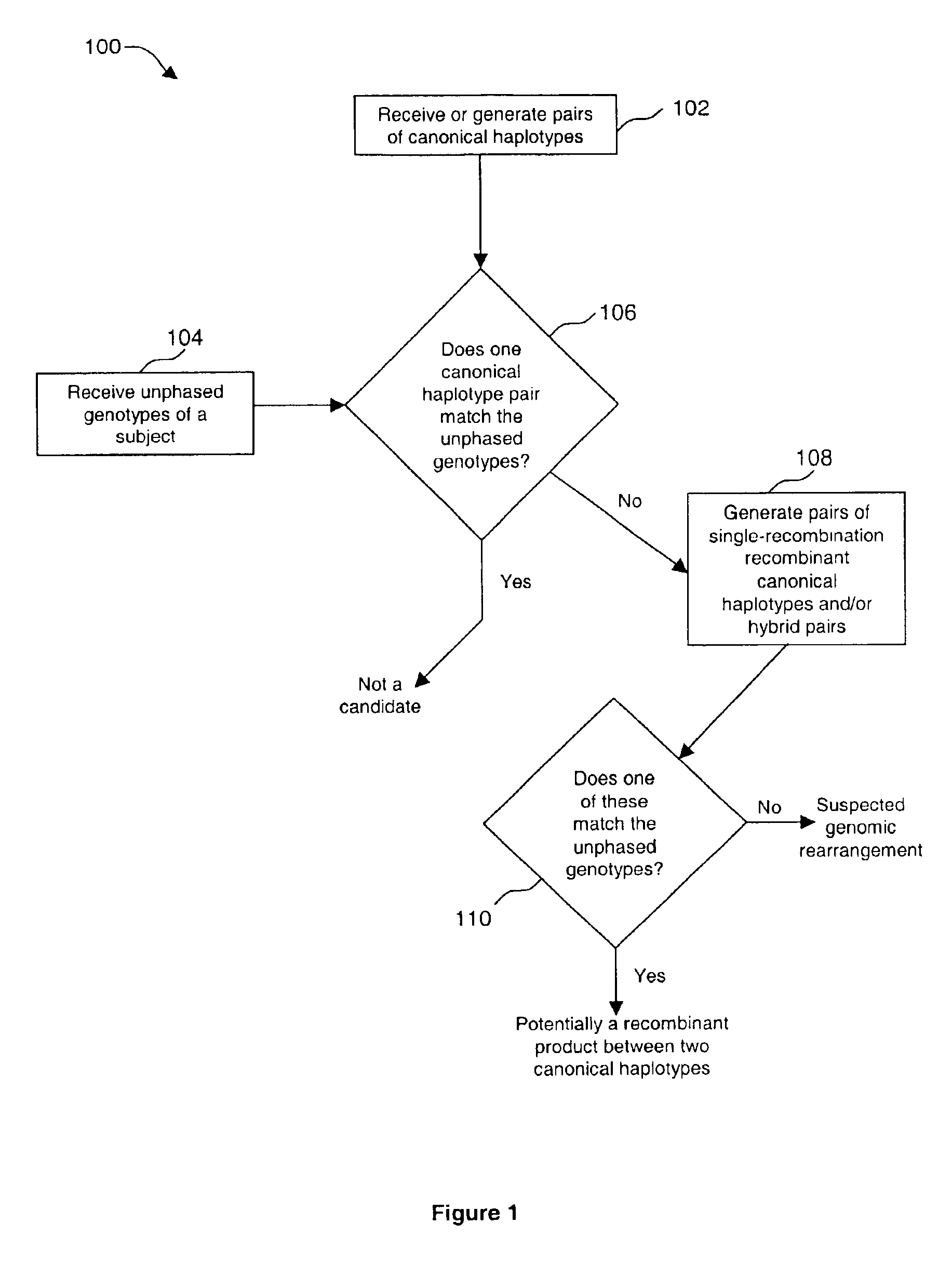Method of identifying genomic rearrangements
a genomic rearrangement and method technology, applied in the field of bioinformatics, can solve problems such as unsuitable for detecting genomic rearrangements, and achieve the effects of facilitating the detection of large genomic rearrangements, facilitating the analysis of large data, and increasing the accuracy of predisposition prediction
- Summary
- Abstract
- Description
- Claims
- Application Information
AI Technical Summary
Benefits of technology
Problems solved by technology
Method used
Image
Examples
example
[0070]DNA sequencing is employed in clinical genetic testing where circumstances warrant whole gene heteroduplex analyses with the highest levels of sensitivity. A by-product of this method includes detailed single nucleotide polymorphism (SNP) information. These data have applications in determining SNP haplotypes using Hardy-Weinberg principles outside of information about family structures.
[0071]Clinical testing for predisposition to breast / ovarian cancer in approximately 15,000 patients by full gene DNA sequencing (BRACAnalysis) has produced extensive information about genetic variation in BRCA1 and BRCA2. Ten clearly defined SNP haplotypes based on 14 polymorphisms located within and near the exons of BRCA1 were identified by applying Expectation-Maximization analysis to this data set.
[0072]Genotypes that do not conform to these haplotype definitions can usually be explained in the following ways: The sample contains a common haplotype from a population not previously encounter...
PUM
 Login to View More
Login to View More Abstract
Description
Claims
Application Information
 Login to View More
Login to View More - R&D
- Intellectual Property
- Life Sciences
- Materials
- Tech Scout
- Unparalleled Data Quality
- Higher Quality Content
- 60% Fewer Hallucinations
Browse by: Latest US Patents, China's latest patents, Technical Efficacy Thesaurus, Application Domain, Technology Topic, Popular Technical Reports.
© 2025 PatSnap. All rights reserved.Legal|Privacy policy|Modern Slavery Act Transparency Statement|Sitemap|About US| Contact US: help@patsnap.com


